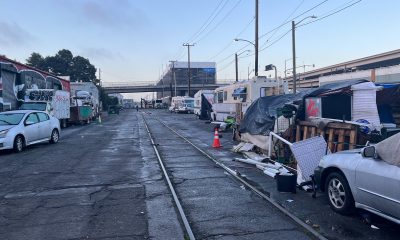#NNPA BlackPress
Solutions for Sandbranch & Deconstructing Environmental Racism
DALLAS WEEKLY MAGAZINE — Last year, DW reported on the ongoing fight for clean water in Sandbranch. As the issue has been repeatedly dismissed or forgotten by both current District 3 County Commissioner John Wylie Price and Texan politicians at large, political newcomer and candidate Derek Avery is taking part in a new charge to secure funding for infrastructure for the historic freedman’s town.
The post Solutions for Sandbranch & Deconstructing Environmental Racism first appeared on BlackPressUSA.
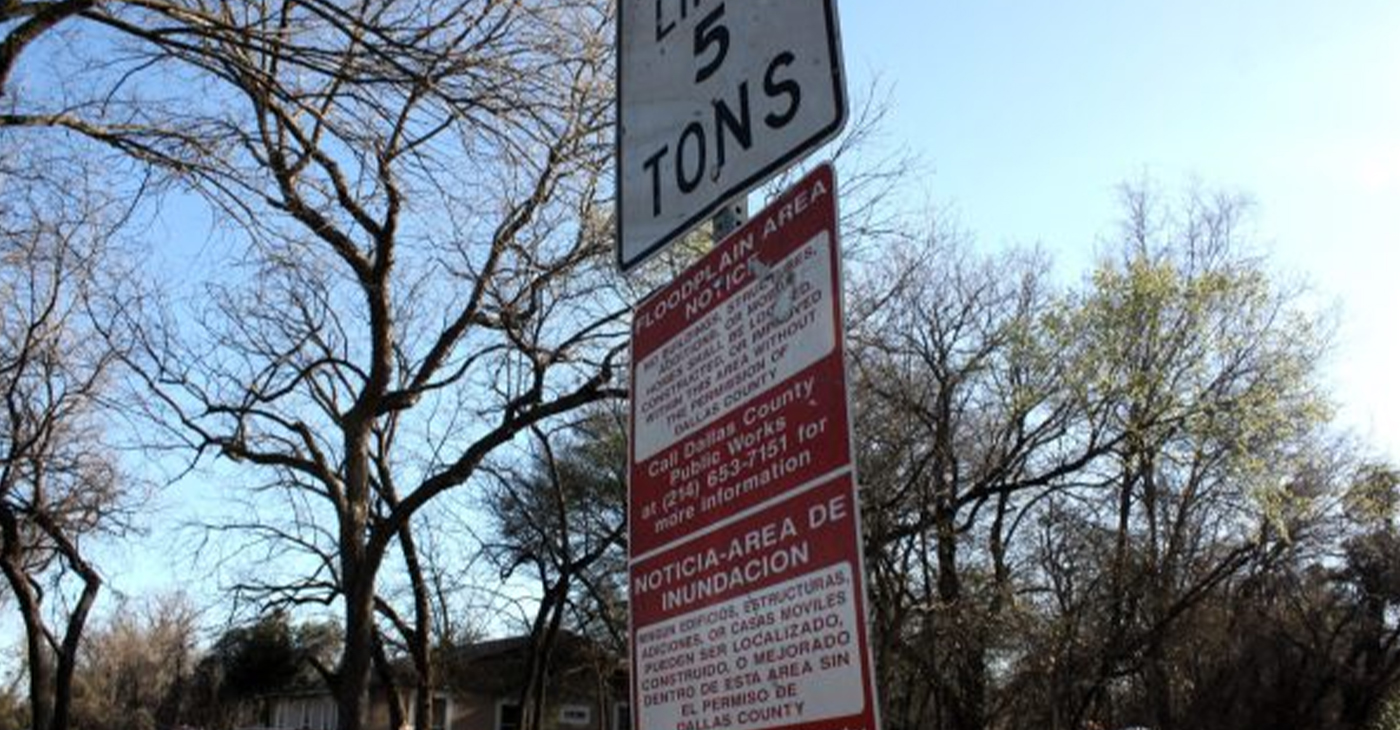
By Sam Judy | Dallas Weekly News
Last year, DW reported on the ongoing fight for clean water in Sandbranch. As the issue has been repeatedly dismissed or forgotten by both current District 3 County Commissioner John Wylie Price and Texan politicians at large, political newcomer and candidate Derek Avery is taking part in a new charge to secure funding for infrastructure for the historic freedman’s town. Likened to other Black communities across the country like Flint and Jackson, Sandbranch’s story is one of environmental racism in Dallas County.
In early March, donated water and food were distributed at Wayside Missionary Baptist Church in Sandbranch. The town has not had drinkable water since its well was contaminated over four decades ago.
Volunteers unload food donations for the residents of Sandbranch. Derek Avery and others unloaded pallets of water for residents as well.
Previously holding a population of over 500, numbers dwindled down to 400 in the early 2000’s, and then around 100 by 2010. The vast majority of Sandbranch’s population have fallen off in the past decades, either succumbing to old age or displacement as a result of harsher living conditions. Property taxes in Sandbranch have risen by 2531%.
The distribution comes a week after a community meeting to discuss plans to bring water to the historic Black town with a population of around 40 residents. Now, the community is working with various entities in civil engineering, the nonprofit sector, and the political sphere to ensure that Sandbranch is revitalized.
“This is a human rights issue. However, when you have four or five different groups saying they’re working for Sandbranch, what government alphabet soup is going to give us money? We’ve got to come together here in the community,” a community member says. “Until we get the Water Board, the Water Coalition, everyone to come together, we’re not going to get anything done.”
Healthy skepticism from the community was tangible during the meeting. And as residents spoke, the full weight of the challenges that they face began to take shape in the small Baptist church. Candidate Derek Avery took questions from the community with support from his civil engineer and advisor on the project, Logan Ortiz, to offer a clearer perspective of Sandbranch’s potential future. A major focus of the meeting: dismantling the established notion that there is no tenable solution to Sandbranch’s lack of drinkable water
“Because we’re in a floodplain, we can’t adversely impact the base flood elevation. So, the soil we remove in laying the pipelines would need to be disposed of.” Civil Engineer Logan Ortiz says. “We’d need to identify that soil for any contaminants, as well. […] And if there’s a bond available for a contaminant we find, that’s a green light and a slam dunk.”
Located in Unincorporated Dallas County near Seagoville, the incumbent County Commissioner of District 3 John Wylie Price has offered a singular solution for the residents of Sandbranch. Dallas County offers a buyout of $5000 for properties in the town, but most residents who have been displaced have been left with less than $500 after demolition costs. Regardless, the community has largely rejected this as an answer, pushing for infrastructure that can be typically expected by a taxpaying resident of Dallas County.
Community members spoke at the meeting as well, including Dallas activist Olinka Green, a former Black Panther/New Panther supporting the people of Sandbranch.
“Talking to the people of the community, they said that it has never flooded as long as they’ve been living there,” Green says. She also explained that many properties were placed in a land trust as owners were forced off property after failing to pay expenses to upshore houses due to the area’s classification as a floodplain. Additionally, the community has stated it has been defrauded by organizations claiming to fundraise for Sandbranch.
“And you have a lot of people in the community that have mistrust, because you have organizations that have come into Sandbranch and said they were going to do certain things. There has been money given for the people of Sandbranch, they never saw that money. These people haven’t been treated with respect.”
An area designated as a floodplain is typically under the consequence of environmental racism. As Black communities across the country suffer infrastructure issues due to increased risk of flooding, such as those in areas like Princeville, N.C. or Uniontown, Ala., classifications on the lack of overall viability are usually overstated. Workarounds exist, and specific approaches in civil engineering are present to ensure infrastructure can be provided. The highest hurdle for a town like Sandbranch is evoking sufficient political will.
“I’ve spoken to FEMA, and the biggest myth that’s told is that you can’t build in Sandbranch,” Avery says. “You don’t have to build above the base water, you can build pipelines and work around the environmental factors with different engineering approaches […] A floodplain is a common concept in environmental racism. This is definitely a problem of political will.”
When addressing environmental racism in Sandbranch, David Marquis of Dallas Water Commons gave further context:
“People who suffer the most environmentally are people of color. With a place like Sandbranch, part of the issue is simply the fact that the water most available to them is contaminated water,” Marquis says. “We have to acknowledge there’s been so much illegal dumping of so many different things in Southern Dallas for so long. There’s 63 square miles of unincorporated land in Southeast Dallas. People have dumped everything from tires to pollutants into the Trinity River. And water moves, it travels. We know that’s been a dumping ground for a long time.”
Additionally, many worry that Sandbranch is under threat of gentrification. As climate change has accelerated in recent years, Black communities around the country see increased risk of flooding. While sectors of West Dallas received levies to decrease flood risk, these developments overlapped with gentrification of the area in the last decades. The area’s current status as a floodplain leaving the area subject of restrictive regulation, residents are hoping developing infrastructure will lead to real community revitalization rather than further displacement.
“There’s three real options with regard to the water,” Civil Engineer Logan Ortiz says.“You could create a closed-loop system; we would do an environmental assessment to determine what that contamination is, and we’d find a location here and [establish] a water treatment facility, you’d be recycling the water that you use; you could run to an adjacent aquaphor in a different city, put in a water tower, and pay for water; or you can tap into the city.”
As tapping into city water would be most sensible, residents and members of the Water Board and Water Coalition have pledged support for candidate Derek Avery’s campaign, which names bringing water to the freedmen’s town as a key stance. Avery estimates a total cost of $12.5 million, with $8 million allocated for the project itself and $4.5 million set aside to cover residents’ water bills for 10 years.
The post Solutions for Sandbranch & Deconstructing Environmental Racism first appeared on BlackPressUSA.
#NNPA BlackPress
IN MEMORIAM: Ramona Edelin, Influential Activist and Education Advocate, Dies at 78
NNPA NEWSWIRE — Born on September 4, 1945, in Los Angeles, California, activist Ramona Edelin’s early years were marked by a commitment to education and social justice. According to her HistoryMakers biography, after graduating from Fisk University with a Bachelor’s degree in 1967, she pursued further studies at the University of East Anglia in England. She earned her master’s degree before completing her Ph.D. at Boston University in 1981.
The post IN MEMORIAM: Ramona Edelin, Influential Activist and Education Advocate, Dies at 78 first appeared on BlackPressUSA.

By Stacy M. Brown, NNPA Newswire Senior National Correspondent
@StacyBrownMedia
Once upon a time, Black Americans were simply known as colored people, or Negroes. That is until Ramona Edelin came along. The activist, renowned for her pivotal roles in advancing civil rights, education reform, and community empowerment, died at her D.C. residence last month at the age of 78. Her death, finally confirmed this week by Barnaby Towns, a communications strategist who collaborated with Dr. Edelin, was attributed to cancer.
Born on September 4, 1945, in Los Angeles, California, Edelin’s early years were marked by a commitment to education and social justice. According to her HistoryMakers biography, after graduating from Fisk University with a Bachelor’s degree in 1967, she pursued further studies at the University of East Anglia in England. She earned her master’s degree before completing her Ph.D. at Boston University in 1981.
Edelin’s contributions to academia and activism were manifold. She was pivotal in popularizing the term “African American” alongside Rev. Jesse L. Jackson in the late 1980s.
Jackson had announced the preference for “African American,” speaking for summit organizers that included Dr. Edelin. “Just as we were called Colored, but were not that, and then Negro, but not that, to be called Black is just as baseless,” he said, adding that “African American” “has cultural integrity” and “puts us in our proper historical context.”
Later, Edelin told Ebony magazine, “Calling ourselves African Americans is the first step in the cultural offensive,” while linking the name change to a “cultural renaissance” in which Black Americans reconnected with their history and heritage.
“Who are we if we don’t acknowledge our motherland?” she asked later. “When a child in a ghetto calls himself African American, immediately he’s international. You’ve taken him from the ghetto and put him on the globe.”
The HistoryMakers bio noted that Edelin’s academic pursuits led her to found and chair the Department of African American Studies at Northeastern University, where she established herself as a leading voice.
Transitioning from academia to advocacy, Edelin joined the National Urban Coalition in 1977, eventually ascending to president and CEO. During her tenure, she spearheaded initiatives such as the “Say Yes to a Youngster’s Future” program, which provided crucial support in math, science, and technology to youth and teachers of color in urban areas. Her biography noted that Edelin’s efforts extended nationwide through partnerships with organizations like the National Science Foundation and the United States Department of Education.
President Bill Clinton recognized Edelin’s expertise by appointing her to the Presidential Board on Historically Black Colleges and Universities in 1998. She also co-founded and served as treasurer of the Black Leadership Forum, solidifying her standing as a respected leader in African American communities.
Beyond her professional achievements, Edelin dedicated herself to numerous boards and committees, including chairing the District of Columbia Educational Goals 2000 Panel and contributing to the Federal Advisory Committee for the Black Community Crusade for Children.
Throughout her life, Edelin received widespread recognition for her contributions. Ebony magazine honored her as one of the 100 Most Influential Black Americans, and she received prestigious awards such as the Southern Christian Leadership Award for Progressive Leadership and the IBM Community Executive Program Award.
The post IN MEMORIAM: Ramona Edelin, Influential Activist and Education Advocate, Dies at 78 first appeared on BlackPressUSA.
#NNPA BlackPress
Tennessee State University Board Disbanded by MAGA Loyalists as Assault on DE&I Continues
NNPA NEWSWIRE — Recent legislative actions in Tennessee, such as repealing police reform measures enacted after the killing of Tyre Nichols, underscore a troubling trend of undermining local control and perpetuating racist agendas. The new law preventing local governments from restricting police officers’ authority disregards community efforts to address systemic issues of police violence and racial profiling.
The post Tennessee State University Board Disbanded by MAGA Loyalists as Assault on DE&I Continues first appeared on BlackPressUSA.
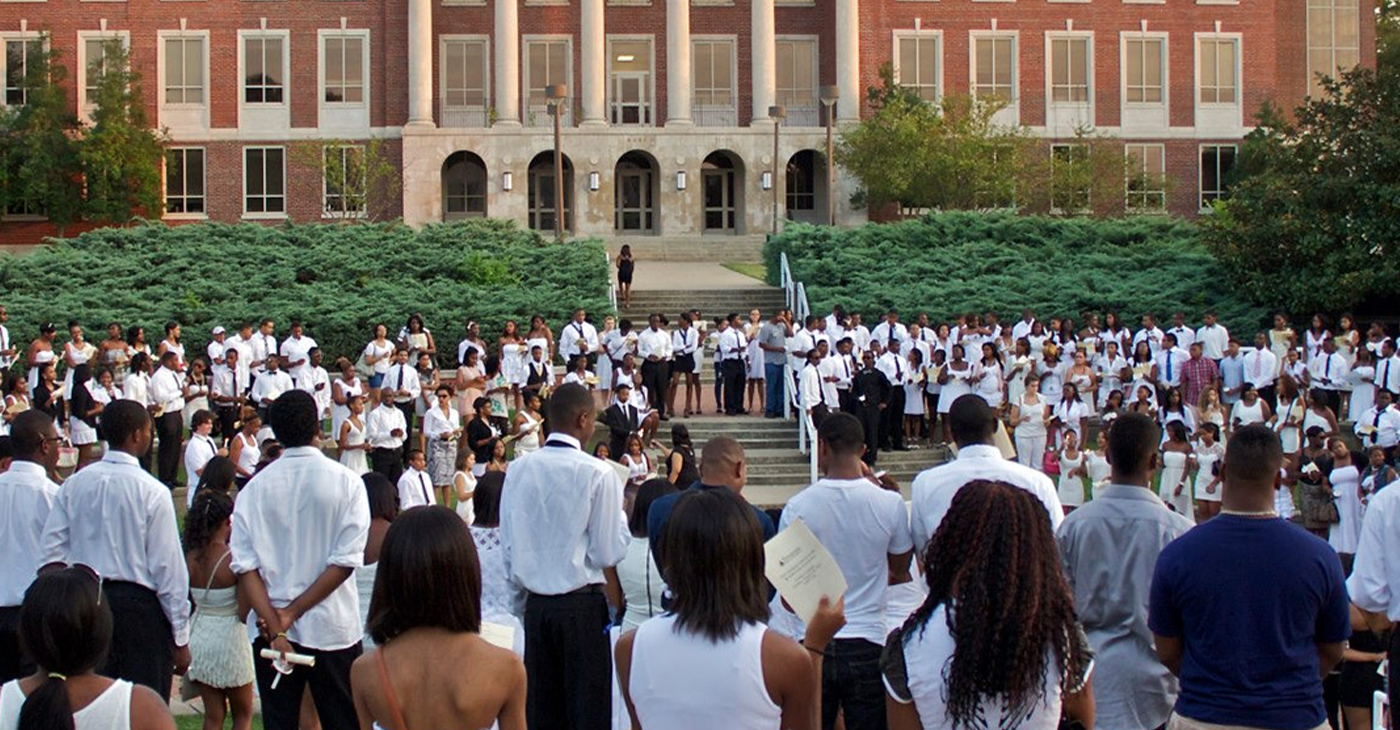
By Stacy M. Brown, NNPA Newswire Senior National Correspondent
@StacyBrownMedia
Tennessee State University (TSU), the state’s only public historically Black college and university (HBCU), faces a tumultuous future as Gov. Bill Lee dissolved its board, a move supported by racist conservatives and MAGA Republicans in the Tennessee General Assembly, who follow the lead of the twice-impeached, four-times indicted, alleged sexual predator former President Donald Trump. Educators and others have denounced the move as an attack on diversity, equity, and inclusion (DE&I) and a grave setback for higher education.
Critics argue that TSU’s purported financial mismanagement is a manufactured crisis rooted in decades of underinvestment by the state government. They’ve noted that it continues a trend by conservatives and the racist MAGA movement to eliminate opportunities for Blacks in education, corporate America, and the public sector.
Gevin Reynolds, a former speechwriter for Vice President Kamala Harris, emphasizes in an op-ed that TSU’s financial difficulties are not the result of university leadership because a recent audit found no evidence of fraud or malfeasance.
Reynolds noted that the disbanding of TSU’s board is not an isolated incident but part of a broader assault on DE&I initiatives nationwide. Ten states, including Tennessee, have enacted laws banning DE&I policies on college campuses, while governors appointing MAGA loyalists to university trustee positions further undermine efforts to promote inclusivity and equality.
Moreover, recent legislative actions in Tennessee, such as repealing police reform measures enacted after the killing of Tyre Nichols, underscore a troubling trend of undermining local control and perpetuating racist agendas. The new law preventing local governments from restricting police officers’ authority disregards community efforts to address systemic issues of police violence and racial profiling.
The actions echo historical efforts to suppress Black progress, reminiscent of the violent backlash against gains made during the Reconstruction era. President Joe Biden warned during an appearance in New York last month that Trump desires to bring the nation back to the 18th and 19th centuries – in other words, to see, among other things, African Americans back in the chains of slavery, women subservient to men without any say over their bodies, and all voting rights restricted to white men.
The parallels are stark, with white supremacist ideologies used to justify attacks on Black institutions and disenfranchise marginalized communities, Reynolds argued.
In response to these challenges, advocates stress the urgency of collective action to defend democracy and combat systemic racism. Understanding that attacks on institutions like TSU are symptomatic of broader threats to democratic norms, they call for increased civic engagement and voting at all levels of government.
The actions of people dedicated to upholding the principles of inclusivity, equity, and justice for all will determine the outcome of the ongoing fight for democracy, Reynolds noted. “We are in a war for our democracy, one whose outcome will be determined by every line on every ballot at every precinct,” he stated.
The post Tennessee State University Board Disbanded by MAGA Loyalists as Assault on DE&I Continues first appeared on BlackPressUSA.
#NNPA BlackPress
Braxton Haulcy and the Expansion of Walker|West Music Academy
May 24, 2023 – Walker West Music Academy gets an early start on expansion. Join us for a Wednesday episode of The …
The post Braxton Haulcy and the Expansion of Walker|West Music Academy first appeared on BlackPressUSA.

May 24, 2023 – Walker West Music Academy gets an early start on expansion. Join us for a Wednesday episode of The …
The post Braxton Haulcy and the Expansion of Walker|West Music Academy first appeared on BlackPressUSA.
-
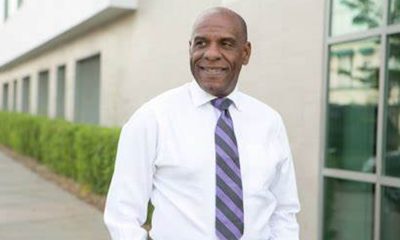
 Community2 weeks ago
Community2 weeks agoFinancial Assistance Bill for Descendants of Enslaved Persons to Help Them Purchase, Own, or Maintain a Home
-

 Activism3 weeks ago
Activism3 weeks agoOakland Post: Week of April 3 – 6, 2024
-

 Business2 weeks ago
Business2 weeks agoV.P. Kamala Harris: Americans With Criminal Records Will Soon Be Eligible for SBA Loans
-
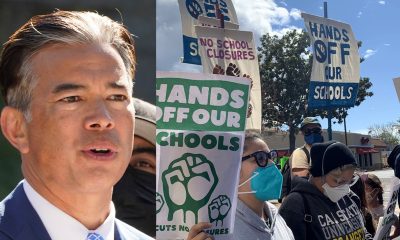
 Community2 weeks ago
Community2 weeks agoAG Bonta Says Oakland School Leaders Should Comply with State Laws to Avoid ‘Disparate Harm’ When Closing or Merging Schools
-
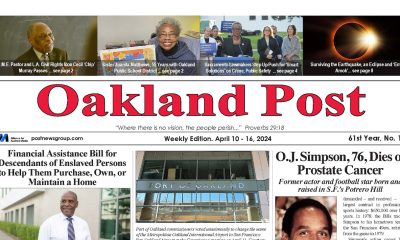
 Activism2 weeks ago
Activism2 weeks agoOakland Post: Week of April 10 – 16, 2024
-

 Community1 week ago
Community1 week agoOakland WNBA Player to be Inducted Into Hall of Fame
-
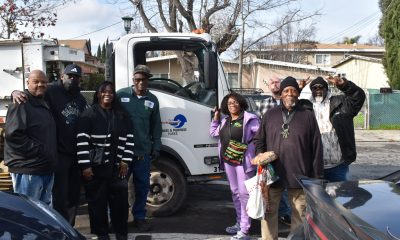
 Community1 week ago
Community1 week agoRichmond Nonprofit Helps Ex-Felons Get Back on Their Feet
-
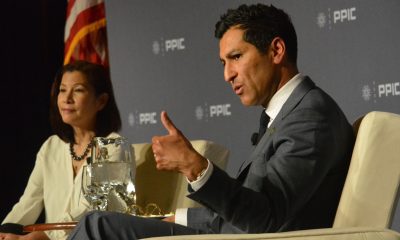
 Community2 weeks ago
Community2 weeks agoThe Year Ahead: Assembly Speaker Rivas Discusses Priorities, Problems





